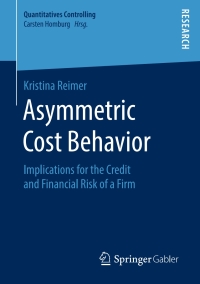Question
In-Substance Defeasance Facts: A private business owner has taken out a loan from a bank, and he has created a sepa- rate trust fund with
In-Substance Defeasance
Facts: A private business owner has taken out a loan from a bank, and he has created a sepa-
rate trust fund with cash equivalents (short-term U.S. treasury bonds and short-term certificates
of deposit) sufficient to pay the debt. The business owner is researching whether he must con-
tinue to record the loan payable on his financial statements.
The Codification refers to the setting aside of assets, as planned payment of a debt, as an "in-
substance defeasance."
The Codification 26 defines in-substance defeasance as:
Placement by the debtor of amounts equal to the principal, interest, and prepayment penalties
related to a debt instrument in an irrevocable trust established for the benefit of the creditor.
In addition to applying the general derecognition principle in par. 40-1, researchers should
consider the following implementation guidance from
ASC 405-20 specific to in-substance
defeasances.
> > > In-Substance Defeasance Transactions
55-3 In an in-substance defeasance transaction, a debtor transfers essentially risk-free
assets to an irrevocable defeasance trust and the cash flows from those assets
approximate the scheduled interest and principal payments of the debt being
extinguished.
55-4 Under the financial-components approach, an in-substance defeasance transaction
does not meet the derecognition criteria for either the liability or the asset. The
transaction lacks the following critical characteristics:
a. The debtor is not released from the debt by putting assets in the trust; if the
assets in the trust prove insufficient, for example, because a default by the
debtor accelerates its debt, the debtor must make up the difference.
b. The lender is not limited to the cash flows from the assets in trust.
c. The lender does not have the ability to dispose of the assets at will or to termi-
nate the trust.
d. If the assets in the trust exceed what is necessary to meet scheduled principal
and interest payments, the transferor can remove the assets.
e. Subparagraph superseded by Accounting Standards Update No. 2012-04.
f. The debtor does not surrender control of the benefits of the assets because those
assets are still being used for the debtor's benefit, to extinguish its debt, and
because no asset can be an asset of more than one entity, those benefits must
still be the debtor's assets.
Question: Does the business owner's so-called "in-substance defeasance" allow him to derecognize the liability? Explain.
Step by Step Solution
There are 3 Steps involved in it
Step: 1

Get Instant Access to Expert-Tailored Solutions
See step-by-step solutions with expert insights and AI powered tools for academic success
Step: 2

Step: 3

Ace Your Homework with AI
Get the answers you need in no time with our AI-driven, step-by-step assistance
Get Started


